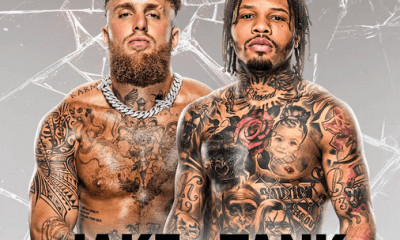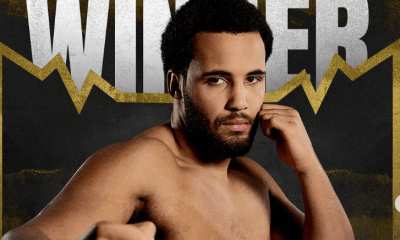Featured Articles
The Inevitable Triple Crown of Emanuel Navarrete: Demystifying Alphabet Titles
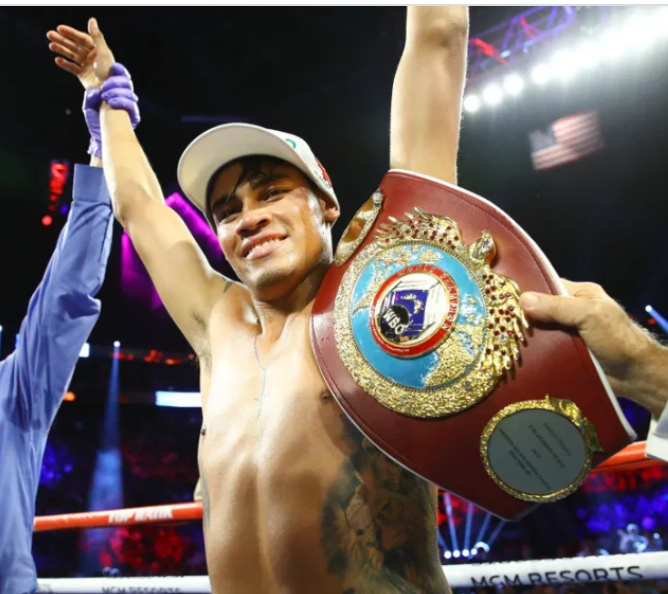
The Inevitable Triple Crown of Emanuel Navarrete: Demystifying Alphabet Titles
The thing which most needs to be understood concerning alphabet sanctioning bodies and the fighters who wear their belts is that the relationship is primarily one of customer and supplier. Fighters pay to wear the alphabet belts that so profligate in the sport of boxing and they are in receipt of a service. The service is twofold. Firstly, they are supplied with hardware. Belts for the “WBO Asia Pacific” middleweight title holder. Belts for the “World Boxing Council Silver flyweight title holder. Belts for the “World Boxing Association International” cruiserweight title holder. Belts for everyone.
Depending upon who you feel like recognising there can be around a thousand title belts floating around the world of boxing at any given time and the great percentage of these are not “world titles” but regional titles, pre-title titles (you read that right) and completely made-up titles for special occasions. Whenever you see a title, someone is paying a portion of their fight fee to the relevant sanctioning body. This is why fringe companies like the WBF and IBO spring into existence – where there is a belt there is cash.
This brings us to the second function served by the thousand belts sucking money out of boxing: they do make financial sense for the fighters and are directly profitable in the case of “world” titles. Take the case of Padraig McCrory (16-0) out of Belfast. He is a fine 175lb prospect with good power he has not yet quite harnessed into a fulsome skillset fighting just below national title level often on Michael Conlan undercards. He’s also the light-heavyweight champion of the world according to the IBO, who crowned him for defeating Lean Bunn, a German who had never contested a fight longer than eight rounds before. He folded to McCrory in six.
Now McCrory can put “world light-heavyweight champion” on his fight-posters. For those that consider the IBO a body of minor reputation, that is fair, but boxing should not kid itself that IBO means more to most members of the paying public than WBA does – and nor should it, in this writer’s opinion. They are all in the same business and if it seems the fighter makes the title, keep in mind that Oleksandr Usyk wears an IBO heavyweight crown and Gennady Golovkin an IBO middleweight strap.
I was interested to see then that Emanuel Navarrete was set to step up to his third weight class and box for a “title” in the shape of the WBO 130lb world championship. The reigning 126lb WBO title holder, Navarrete is a fine example of a modern-day boxing customer to the bodies who are meant to police them. He has been paying the WBO for years.
I have to say here that there is no implication that Navarrete has done anything illegal nor even anything morally wrong within the culture of the industry he inhabits. Everyone pays sanctioning fees. Anthony Joshua, who is boxing’s second biggest earner since Floyd Mayweather’s retirement, is rumoured to have sunk well over a million dollars into sanctioning fees. Generally, champions and challengers will pay 2-3% of their fight purse to a roof of around $250,000 depending upon which ABC they are working with; some alphabets charge a registration fee to promoters, also. This means that for the likes of Joshua, Canelo Alvarez, and Floyd Mayweather the sanctioning fees can become quite prohibitive. Mayweather himself dropped belts to avoid paying these monies. The wonderful Erik Morales at one point completely ceased co-operating with his suppliers.
But generally, fighters do as Navarrete does and they pay for the gold. The proliferation of minor regional titles I describe in paragraph one was something that Navarrete neatly sidestepped. That is because he was very much the opponent for his 2018 fight with Isaac Dogboe, who had paid for regional title belts since 2015 at one point somehow being named both the WBO “African Featherweight” champion and the WBO “Oriental Featherweight” champion. Dogboe is British but was born in Ghana. Paying for these titles got him onto the WBO on-ramp, establishing him as a customer of this organisation and allowing relationships to be built between the WBO and Dogboe’s promotional organisation – again, if this sounds like a form of corruption, it should be noted that this is normal, no accusations of legal wrongdoing are being made.
When Dogboe surprisingly dropped his 122lb title to Navarrete, the WBO had a new customer – and a good one. Navarrete boxes in America and on American television, which is still the best way to enhance a purse without a pay-per-view audience. His most recent paydays are estimated at around a million dollars. This meant that when Navarrete decided that he could no longer make 122lbs, the WBO had a problem, namely that it was losing money on Navarrete’s purses as he no longer held a WBO strap. Navarrete also had a problem – he couldn’t leverage television or the paying public with a “world championship.” So, after boxing a fighter named Uriel Lopez Juarez who had lost his last three fights, Navarrete was deemed for a title shot at 126lbs, against another WBO customer, Ruben Villa, who had been paying to wield a regional WBO strap for the past year.
Villa was in no way qualified to face Navarrete. There is absolutely no question of the WBO fixing fights, but there they mandated a contest that would have genuinely shocked had it produced a Navarrete loss. This type of match-making is as old as the sport, where lesser fighters are sacrificed at the alters of the sport’s cash cows to fatten their records and progress their careers: but it is not, until recently, that this became normal for sanctioned “world title” fights.
Villa had never boxed over twelve rounds before in his career. Although he was clearly able to defend himself, Villa was dumped twice by Navarrete who won a clear points decision win. What we saw this Friday night in Glendale was a repeat of this exercise as Navarrete, once more struggling with the weight limit in his new division, departed for pastures new and 130lbs. The soft opponent this time would be Liam Wilson, an Australian, like Villa before him a loyal WBO customer having wielded both their “WBO Asia Pacific” 130lb title and their “WBO International” 130lb title in his short career (now 11-2). This is the first piece of the alphabet puzzle when trying to decipher who the most valued customers of an alphabet organisation are: is the championship match against a soft opponent who is expected to lose?
Look closer though, and you can sometimes see more.
Liam Wilson was astonished at the weigh-in when he was announced at just over 126lbs, nearly four pounds below the divisional weight-limit.
“Something happened with the scales,” he told Australian media. “I’m sure they’ve been tampered with. I weighed in 20 minutes prior to the weigh in. I was just under weight. I went on the official scales for the official weigh-in and I was four pounds under, magically. So, in twenty minutes I lost four pounds, two kilos in Australian weight.”
Fighters sometimes sit in saunas forgoing water and sweating the best part of themselves into a tightly wrapped arrangement of plastic to lose this sort of weight. It is an enormous difference for Wilson, a man who has not weighed in close to 126lbs since the Oceanian Youth & Junior Championship – in 2012.
“I think he’s come in overweight and they tampered with the scales to make it seem like he made it.”
This is a significant accusation, and one that has not been proven. From the WBO’s own regulations:
The President of the Organization shall attend or designate a WBO Supervisor to attend every World Championship contest sanctioned by the WBO. The duties of said Supervisor shall be to represent the WBO at the Championship Match and prefight events including the weigh in…if a World Champion fails to make the prescribed weight for his category, the Champion shall lose the title at the scales, and the Championship shall then and there be declared vacant, whether or not the challenger makes weight.
The WBO then, is responsible for making sure the weigh in is conducted fairly to both parties. Currently, there is no evidence that this was not the case.
Happily, the fight itself was a good one and a competitive affair before Navarrete lifted the vacant strap by technical knockout in the ninth. Navarrete, with limited experience of the 130lb punch was caught with a flush left hook in the fourth which Wilson followed up with good pressure and punching to ditch his man. Navarrete had the experience to spit the gumshield out while receiving a standing eight, clearly in trouble; Wilson did not have the experience to follow up against a hurt Navarrete who had bought himself some extra time.
That is why good customers tend to get inexperienced opponents when fighting for a favoured organisation’s strap. Imagine Shavkatdzhon Rakhimov or Roger Gutierrez chasing a hurt Navarrete across the ring in what, after all, is supposed to be a world-title fight. That is the key. There was nothing wrong with making Navarrete-Wilson; it was a good fight conducted in what were difficult circumstances for the Australian and one he nearly won, but for a world-title to be perpetrated upon the boxing public at the end of it is unreasonable.
It is also inevitable. As soon as the people who are policing the fighters become a service industry for those fighters, the type of easy night we repeatedly see for WBO favourites becomes nothing less than a part of the fabric of the sport. Even so, a fighter becoming a triple-crown champion by defeating not one but two fighters who have never boxed the championship distance seems shocking, even for this sport.
To comment on this story in the Fight Forum CLICK HERE
-

 Featured Articles4 weeks ago
Featured Articles4 weeks agoThe Hauser Report: Zayas-Garcia, Pacquiao, Usyk, and the NYSAC
-

 Featured Articles3 weeks ago
Featured Articles3 weeks agoOscar Duarte and Regis Prograis Prevail on an Action-Packed Fight Card in Chicago
-

 Featured Articles2 weeks ago
Featured Articles2 weeks agoThe Hauser Report: Cinematic and Literary Notes
-

 Book Review2 weeks ago
Book Review2 weeks agoMark Kriegel’s New Book About Mike Tyson is a Must-Read
-

 Featured Articles4 weeks ago
Featured Articles4 weeks agoRemembering Dwight Muhammad Qawi (1953-2025) and his Triumphant Return to Prison
-
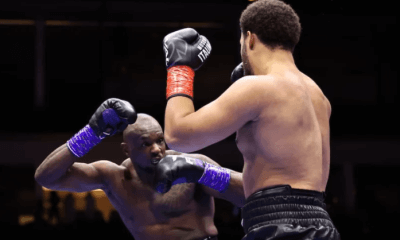
 Featured Articles7 days ago
Featured Articles7 days agoMoses Itauma Continues his Rapid Rise; Steamrolls Dillian Whyte in Riyadh
-
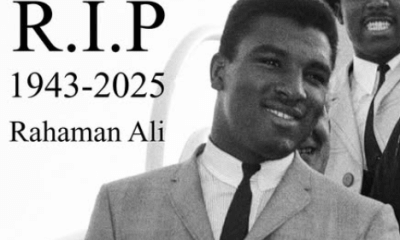
 Featured Articles3 weeks ago
Featured Articles3 weeks agoRahaman Ali (1943-2025)
-

 Featured Articles3 weeks ago
Featured Articles3 weeks agoTop Rank Boxing is in Limbo, but that Hasn’t Benched Robert Garcia’s Up-and-Comers


